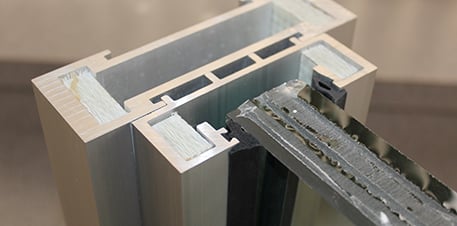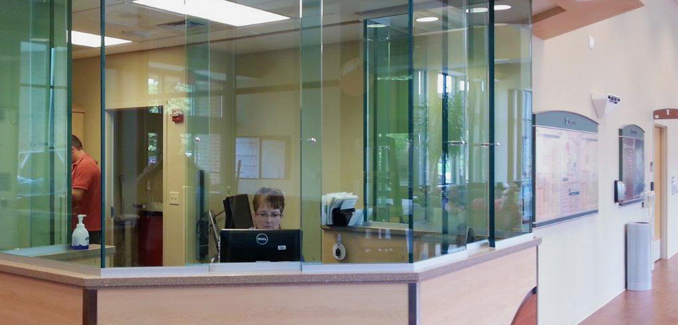Buildings use more than half the energy on earth–and in the U.S. those buildings are often hospitals and clinics. Healthcare continues to experience a construction boom in the United States and increasingly, those U.S. healthcare facilities find themselves in need of an enhanced access control system with bulletproof characteristics.
According to a recent survey by Health Facilities Management magazine, “65 percent of hospitals and health systems are specifying green or environmentally friendly materials in all or some of their current construction or renovation projects.” Unfortunately, even as hospitals are continuing to pursue greener buildings and LEED ratings, the bulletproof materials industry has lagged behind, offering few options with enhanced R-values, thermal breaks, gas fills, or meaningful insulation.
The Challenge of Bringing Together Security and LEED
Even worse, few bulletproof window installers design, engineer, and fabricate their own components. Not only are they limited to the commodity materials they can buy from big suppliers, but they also lack the experience needed to integrate a bullet resistant or enhanced access control system into a building with energy efficient results. Issues like indoor environmental quality and comfort just aren’t on their radar.
Consider the standard ballistic fiberglass-backed bullet resistant door or window frame used in your facility’s enhanced access control systems. Such frames are the “top of the line” for most bulletproof installers. Here’s a cross-sectional view:

You’ll note that there are continuous aluminum members connecting the “safe” and “threat” sides of the frame. This is perfectly safe in terms of stop bullets, but absolutely terrible at stopping heat. Aluminum is an excellent heat conductor. While these frames are great in many interior-only applications, they can make a mess of your HVAC system anywhere the great outdoors fluctuates from the ideal indoor temperature of 72 degrees with 40 percent humidity. For example, Total Security Solutions CEO Jim Richards has seen bulletproof barrier systems in the Dakotas where the exterior window frames sweat all summer, then frost over in the winter. From an indoor environmental quality, efficiency, and cost standpoint, it’s almost as if there are gaping holes in the walls.
This, Jim explains, is why TSS introduced their TSS Thermal Frame System this past spring. “We developed this ballistic frame system specifically because architects were asking for it,” Jim said. “This grew directly out of their need to thermally break the exterior of the building, in order to meet their clients’ specific benchmarks, LEED credits, and sustainability goals.”
Significant Experience with “Green” Ballistic Barriers and Enhanced Access Control
Even if a company has some generic experience with designing around HVAC and tuning a building’s envelope, hospital and other healthcare facilities add a whole other layer of challenges because of the complexity of their regulatory and programmatic requirements. TSS is acutely aware of the many ways an access control or bullet resistant barrier system can strain a building’s HVAC and other systems. More importantly, TSS is adept at right-sizing your security system, fitting the right level of protection to the right place in your facility, with the right components to keep you running smoothly.
“We have a lot of experience working with healthcare systems on their access control and bullet resistant security systems,” Jim notes, “Both with the ‘standard’ areas—reception, screening areas, the pharmacy—and also designing and manufacturing totally custom solutions.” For example, the “blood box” TSS built for the Texas Children’s Hospital in Houston. “What it always comes down to is understanding how healthcare works: the risks they face, the places that trouble is likely to pop up, and the places they need to be able to move between with as little friction as possible in order to get their jobs done.”
Next Steps:
- Sign up for our newsletter to stay up-to-date with the latest industry news
- Follow us on Twitter, Facebook or LinkedIn
- Download our Ultimate Guide to Bulletproof Glass and Bullet Resistant Barriers infographic


